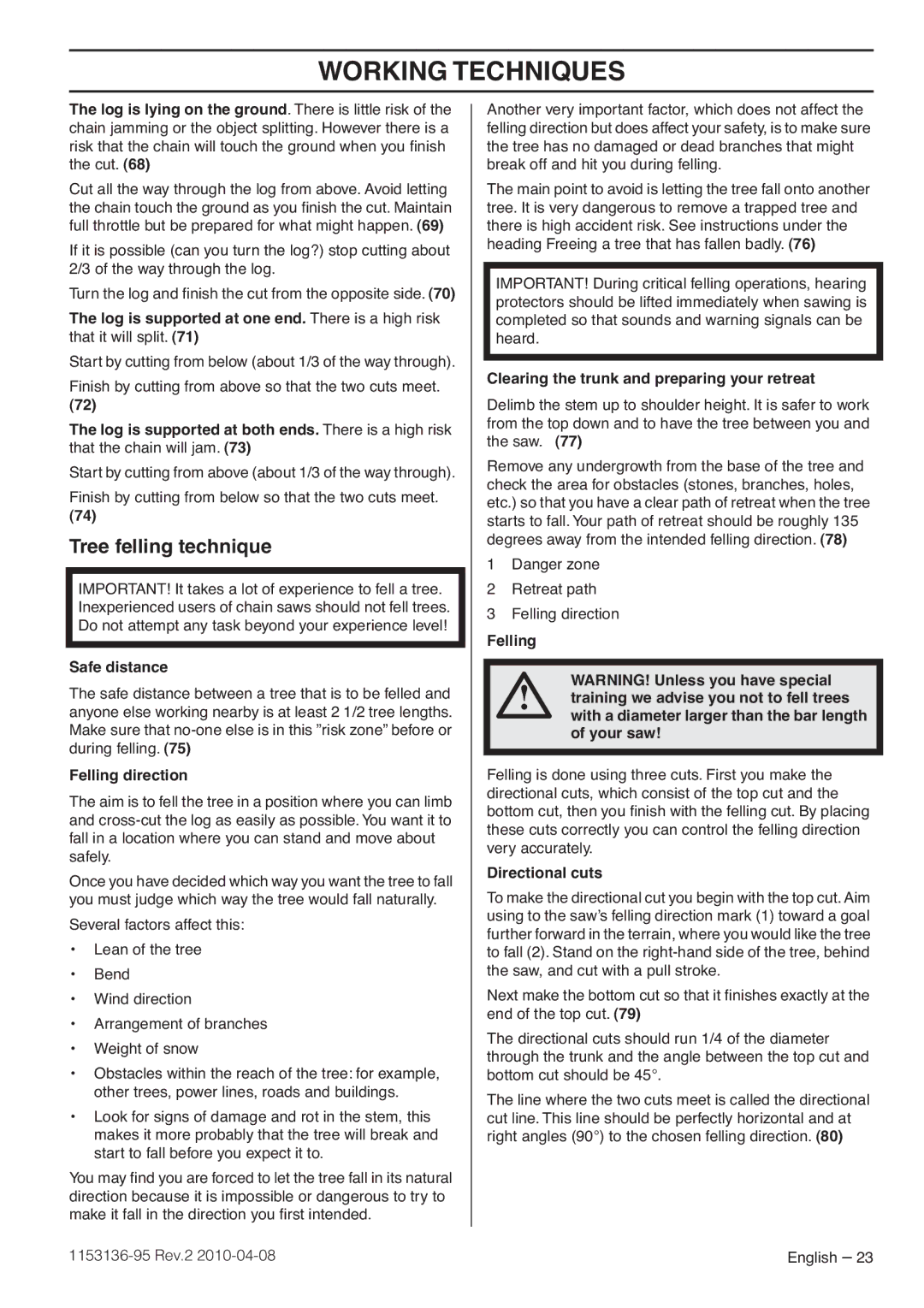1153136-95 specifications
The Husqvarna 1153136-95 is a high-performance chainsaw designed for ease of use and efficiency, making it an ideal choice for both residential and professional users. Known for its robust build and reliability, this chainsaw is particularly well-suited for tasks such as tree pruning, cutting firewood, and managing landscaping projects.One of the standout features of the Husqvarna 1153136-95 is its lightweight design. Weighing in at just around 10 lbs, it allows users to easily maneuver during extended periods of operation without causing excessive fatigue. This is complemented by an ergonomic handle that provides a comfortable grip, reducing strain on the hands and wrists.
The chainsaw is powered by an efficient and reliable engine. With a displacement of 38.2 cc, it delivers ample power for most cutting tasks while maintaining fuel efficiency. The technology incorporated into its engine design ensures lower emissions, making it an environmentally friendly option in the category of gas-powered chainsaws.
Another impressive feature of the Husqvarna 1153136-95 is the X-Torq technology. This innovatively engineered system reduces fuel consumption by up to 20%, resulting in longer runtimes between refueling. Additionally, it minimizes harmful exhaust emissions, meeting stringent environmental regulations and standards.
The chainsaw also includes an automatic oil pump that ensures a consistent flow of lubrication to the bar and chain, enhancing longevity and reducing wear during use. This feature allows users to focus on their tasks without frequently stopping to manage oil levels.
Additionally, the tool-less chain tensioning system is designed for user convenience, enabling quick adjustments on the fly without needing additional tools. This feature is especially useful for those who are busy or working under time constraints.
Safety is a priority with the Husqvarna 1153136-95, as it comes equipped with a chain brake system designed to stop the chain in the event of a kickback. This important safety feature provides peace of mind for users, especially those new to chainsaw operation.
Overall, the Husqvarna 1153136-95 combines performance, user-friendliness, and advanced technology, rendering it a versatile tool suitable for various cutting tasks. Whether tackling home maintenance or professional projects, this chainsaw is engineered to deliver reliable results and satisfy the demands of users.

